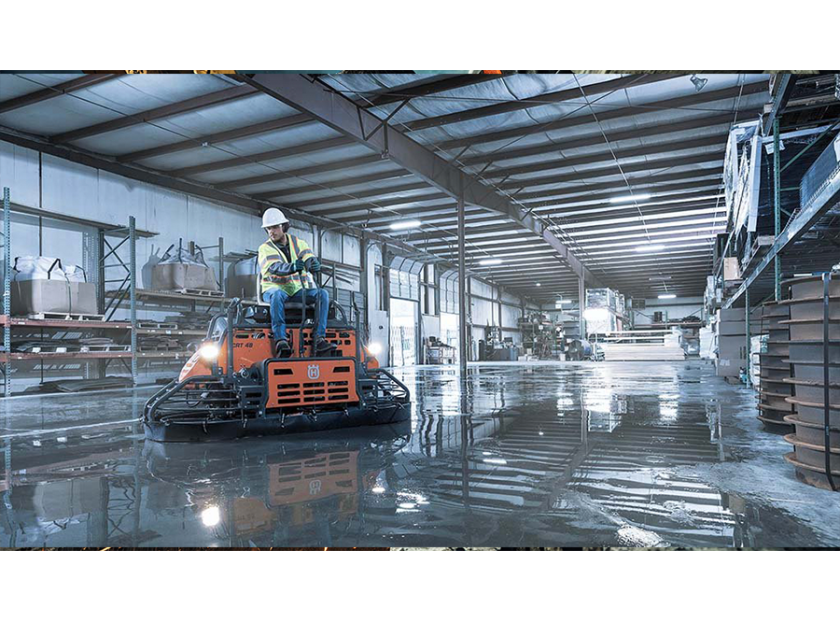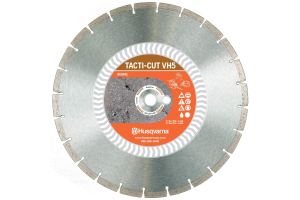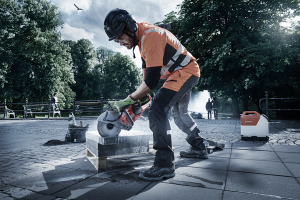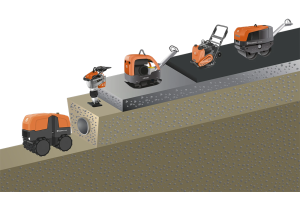Mastering Power Trowels
Mastering Power Trowels: A Buying & Maintenance Guide for Optimal Performance


As a contractor, investing in the right power trowel is a critical decision that impacts both the quality of your work and your bottom line. Power trowels, also known as ride-on trowels or concrete finishing machines, come in a wide range of sizes and configurations to suit different job requirements.
Whether you're looking for a small walk-behind trowel for tight spaces or a high-powered ride-on trowel for large slabs, understanding the key factors to consider when making a purchase will ensure you get the best machine for your needs.
Walk-Behind vs Ride-On Trowels: Assessing Your Needs
The first decision to make is whether a walk-behind or ride-on trowel best fits your typical jobs. Walk-behind trowels are well-suited for smaller slabs up to around 10,000 square feet. They're more maneuverable in tight spaces and easier to transport. If most of your work falls in this range, a walk-behind may be the most economical choice. For instance, the Allen Pro36 Walkbehind Trowel with a 9 HP Honda engine offers reliable performance for smaller tasks.
However, once you start regularly tackling slabs over 10,000 square feet, the efficiency of a ride-on trowel becomes clear. Ride-on models allow the operator to cover much more ground in less time - potentially cutting finishing time in half compared to a walk-behind. This time savings can make a significant difference in labor costs and the ability to take on more jobs. For larger projects, consider the Whiteman HTX6H 48" Hydrostatic Ride-On, which offers enhanced control and power.
It's important to note that the largest ride-on trowels may be too heavy for some elevated deck work. The weight of the machine, operator, and concrete can exceed the load capacity of the decking material. In this case, lighter walk-behind trowels are the safer choice. Having both types of trowels in your fleet provides the versatility to handle any job that comes your way.
Key Questions to Ask When Choosing a Trowel
To hone in on the ideal trowel for your operation, consider the following questions:
- Slab Size and Volume: What are the typical dimensions and total square footage of the slabs you work on? Are most of your jobs on the smaller side, or do you regularly take on large projects?
- Job Site Conditions: Will you primarily be working on ground-level slabs, elevated decks, or a mix of both? Elevated work may limit the size and weight of the trowels you can use.
- Indoor vs. Outdoor Use: Do you frequently work inside occupied buildings where gas or diesel fumes could be an issue? In these situations, propane-powered trowels are a better choice to maintain air quality, such as the Whiteman HHXDF5 48" Riding Trowel with a versatile 31HP Kubota gas engine and propane dual fuel option.
- Transportation Logistics: Consider how you'll transport the trowel to and from job sites. Larger ride-on trowels may require a dedicated trailer or larger truck, while smaller walk-behinds can often fit in a standard pickup truck bed.
- Crew Experience Level: Are your operators experienced with riding larger trowels, or are they more comfortable with walk-behind models? Providing the type of equipment your crew is most proficient with will maximize efficiency and quality.
Answering these questions will guide you towards the trowel that will be the best fit for your jobs, crews, and budget.
Engine Type and Horsepower Requirements
The next consideration is the trowel's engine type and horsepower. Smaller walk-behind trowels typically use gas engines in the 5-13 horsepower range. This is enough power to efficiently finish most slabs while keeping the machine lighter and more maneuverable. For example, the Bartell B436 36" Walkbehind Trowel with a GX160 engine is an excellent choice for smaller slabs.
As you move up to ride-on trowels, you'll find both gas and diesel engine options. Gas-powered ride-on trowels commonly range from 25-60 horsepower, while the largest ride-on machines may pack 75-100 horsepower diesel engines. The additional low-end torque of a diesel is beneficial for turning large diameter pans and blades, which can require significant power. For high-powered needs, consider the Allen 074140 HDX600T4 46" Hydraulic Riding Trowel with a diesel engine.
If you frequently work in enclosed spaces where air quality is a concern, propane engines offer a clean-burning alternative to gas or diesel. Many manufacturers now offer dual fuel trowels that can switch between gas and propane with the turn of a valve. This versatility allows you to use gas for outdoor work and seamlessly transition to propane when moving indoors.
Choosing the Right Blades and Pans
The business end of any trowel is the blades or pans that contact the concrete surface. There are multiple main options here: float blades and pans, combination blades, and finishing blades. Combination blades, as the name implies, can be used for both the initial floating stages and final finishing. They're a versatile choice for many applications.
Float pans, on the other hand, are large circular discs that attach to the trowel arms in place of blades. Pans are preferred for achieving extremely flat floors with minimal deviations, and are used during the initial floating process. They're commonly used in warehouses, distribution centers, and other facilities where flatness tolerances are tightest.
Many contractors use pans for the initial floating stages, especially on outdoor slabs where direct sun and wind can cause the concrete to set faster. The large surface area of the pans allows them to quickly work the slab before it hardens too much. As the concrete begins to set up, they'll then switch to finish blades for the final passes. This is also referred to as burnishing.
Another consideration in blade choice is the hardness of the concrete you typically work with. Harder concrete mixes may require stiffer blades to effectively finish the surface, while softer mixes can use more flexible blades. Having a range of blade types on hand ensures you're prepared for any mix design.
If you’re working with colored concrete or decorative floors, you’ll want to use a plastic finishing blade. Using this type of blade will prevent any burn marks (i.e. burnishing) that can happen when using steel finishing blades, and provides the sheen of a polished floor.
Maintaining Your Power Trowel for Peak Performance
Investing in a high-quality trowel is only the first step – proper maintenance is critical to keep it running at peak efficiency and extend its lifespan. A well-maintained trowel not only delivers better results but also minimizes costly downtime and repairs. Here are the key areas to focus on:
Engine Oil Changes
Performing regular oil changes is one of the most important aspects of trowel maintenance. After the initial break-in period (typically the first 20-50 hours), be sure to drain the oil and replace it with fresh oil of the grade recommended by the engine manufacturer.
From there, most manufacturers recommend oil changes every 500-1,000 hours of operation, but this can vary depending on the specific engine and the conditions it operates in. Dusty environments or extended high-rpm operation may require more frequent changes. Consult your owner's manual for the recommended interval and oil type for your particular model.
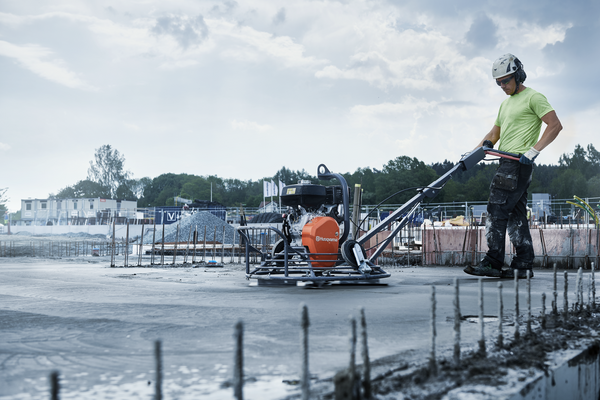

Air Filter Maintenance
The air filter is your engine's first line of defense against damaging dust and debris. Regularly inspecting and cleaning or replacing air filters is essential, especially when working in dusty conditions. A clogged air filter restricts airflow to the engine, reducing power and efficiency. In extreme cases, it can cause engine damage.
Many newer diesel-powered trowels have automatic shutdown systems that will stop the engine if the air filter becomes excessively clogged. This prevents the engine from running in a starved air condition, which can cause serious damage. If your trowel unexpectedly shuts down, checking the air filter should be one of the first troubleshooting steps.
To prevent issues, check the air filter at least once a week and replace it whenever it becomes heavily soiled or damaged. Having spare filters on hand ensures you can quickly swap them out and get back to work.
Trowel Arm and Blade Inspection
The trowel arms and blades take a beating on every job, so it's important to regularly inspect them for damage or excessive wear. Before each pour, check that the arms are straight and not bent or cracked. Inspect the blades for chips, warping, or uneven wear. Any issues with the arms or blades will translate to the finished concrete surface, so it's critical to address them promptly.
Blade wear is normal and expected, but uneven wear can indicate an underlying problem like a bent arm or worn spider assembly. If you notice one blade wearing faster than the others, it's time for a closer inspection of the trowel head assembly.
Cleaning and Storage
Concrete has a tendency to find its way into every nook and cranny of a trowel, where it can harden and cause issues down the line. After each use, take the time to thoroughly clean any concrete splatter or buildup from the blades, pans, and the undercarriage of the trowel. A pressure washer can make quick work of this task.
If you're storing the trowel for an extended period, it's a good idea to apply a light coat of oil to the blades and arms to prevent rust. Be sure to store the machine in a dry, covered area to protect it from the elements.
Computerized Maintenance Assistance
Many newer trowels come equipped with onboard computers that continuously monitor various systems on the machine. These computers can alert the operator to potential issues like low oil pressure, high engine temperature, or clogged air filters before they cause serious damage.
In addition, service technicians can connect a diagnostic tool to the computer to quickly troubleshoot any faults. This takes much of the guesswork out of repairs and helps get your trowel back up and running faster. If you're considering a new trowel purchase, look for models with this computerized diagnostic capability.
The Importance of Proper Training
Even the most advanced power trowel is only as effective as the operator behind the controls. Investing in thorough training for your crews is every bit as important as choosing the right machine.
Operating a trowel is as much an art as a science. Experienced operators develop a feel for when the concrete is ready for each stage of the finishing process. They know just the right blade pitch and engine speed to use for each pass to achieve a flawless finish.
For new operators, there's no substitute for hands-on learning under the guidance of a seasoned mentor. Consider pairing up new hires with your most experienced finishers to accelerate their learning curve. You might also look into manufacturer-provided training programs, either online or in-person, to supplement on-the-job learning.
Some key skills every trowel operator should master include:
- Adjusting blade pitch and engine rpm for each stage of the finishing process
- Judging concrete readiness by feel and appearance
- Knowing when to switch from pans to finish blades
- Feathering edges and avoiding "birdbaths" or low spots
- Efficiently maneuvering the trowel around obstacles and edges
- Performing daily maintenance checks and minor adjustments
In addition to operator training, it's also wise to cross-train your mechanics on trowel repair and maintenance. Having in-house expertise can help you quickly diagnose and fix issues, minimizing costly downtime waiting for an outside technician.
Choosing the Best Trowel for Your Business
With so many options on the market, selecting the right trowel can seem daunting. However, by carefully evaluating your specific needs and prioritizing the features that matter most for your jobs, you can narrow the field to a few top contenders.
Of course, budget is always a consideration as well. However, it's important to balance the upfront cost with the long-term productivity gains and reduced maintenance expenses that a high-quality trowel can provide. Don't hesitate to reach out to equipment manufacturers or dealers for guidance – they can be a valuable resource in helping you find the optimal machine for your needs and budget.
Once you've chosen your new trowel, commit to a rigorous maintenance schedule to keep it in top form. By following the manufacturer's recommended service intervals and using genuine replacement parts, you'll ensure your machine is always ready to tackle the next job with maximum efficiency.
The right power trowel can be a game-changer for your concrete finishing operation, delivering better results in less time and with less operator fatigue. By doing your homework upfront and investing in proper maintenance, you'll be well on your way to boosting your productivity, reputation, and bottom line.































